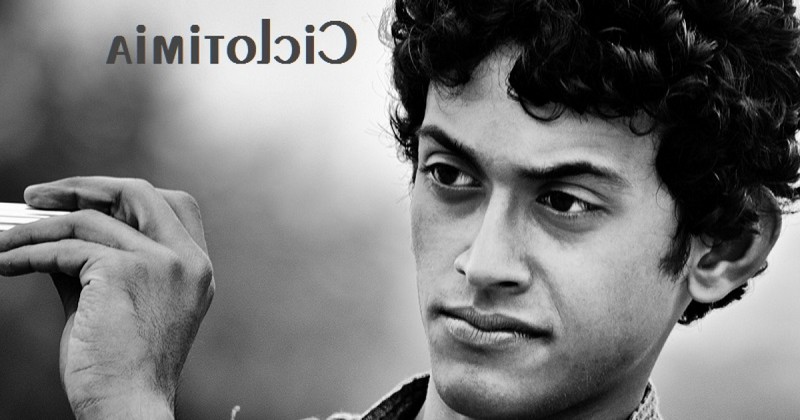Cyclothymia: the mild version of Bipolar Disorder

We explain the causes of Cyclothymia, as well as its symptoms and treatment.
The Cyclothymia (or cyclothymic disorder) is a mood disorder mood disorder similar to Bipolar similar to Bipolar Disorder, and is characterized by mild phases of depression and hypomania.
Adults are diagnosed with this pathology after symptoms persist for at least two years. In children and adolescents, it is diagnosed if symptoms are present for at least one year.
Throughout this article we will see a summary of the characteristics of cyclothymia: its symptoms, possible causes, and treatment.
What is Cyclothymia?
Cyclothymia is characterized by a persistent mood instability. That is, the person suffering from this disorder shows periods of mild depression and euphoria. Generally, it usually appears in adulthood and follows a chronic course. Although it is common that for several months, the person suffering from cyclothymia shows a normal mood.
The cyclothymic person is not aware of his or her mood swings, as they are relatively mild. In addition, the euphoric periods are often perceived as pleasant and therefore they usually do not seek psychological help.
About 30% of people with cyclothymic disorder may eventually develop bipolar disorder type I or type II. Cyclothymia frequently progresses to type II and less frequently to type I. The prevalence of cyclothymia is between 0.4 and 1% of cases and affects men and women equally.
What is hypomania?
The hypomania is a mild mania. The hypomanic phase of cyclothymia is characterized by an elevated mood, euphoria, excitement and hyperactivity..
During the state of hypomania, the cyclothymic subject has less need for sleep and rest, and is full of energy. Although the symptoms of hypomania are milder than those of mania, they are also very destructive, causing conflicts and ruptures in love relationships and friendships, affecting work, causing financial difficulties, etc.
Symptoms
The person with cyclothymia shows ups and downs in mood. The following are the characteristic symptoms of the depressive and hypomanic phases.
Symptoms of hypomania
- Mild euphoria
- Agitation
- Excessive physical activity
- Risk-taking behaviors
- Endless energy
- Verbose
- Desire and drive for success
- High self-esteem or grandiosity
- Accelerated thinking
- Attention deficit
- An exaggerated sense of happiness or well-being and extreme optimism
- Poor judgment
- Aggressive or hostile behavior
- Excessive spending
- Increased sexual activity
- Decreased need for sleep
Symptoms of mild depression
- Feelings of sadness
- Melancholy
- Anxiety
- Feelings of guilt
- Tiredness and lack of motivation
- Lack of appetite or excessive eating
- Loss of interest in activities that were once considered pleasurable
- Decreased sexual desire
- Concentration problems
- Irritability
Causes
The exact causes for why a person develops cyclothymia are not known, although it is assumed that a multiplicity of factors that participate in its emergence: it is a multicausal phenomenon, as occurs in most psychological disorders.It is a multicausal phenomenon, as occurs in most psychological disorders. Thus, there are probably genetic predispositions at play, as well as triggering events related to what happens around the person.
Treatment of cyclothymia
Cyclothymia causes many problems for the person suffering from this disorder. Therefore, psychological help should be sought as soon as possible.Cyclothymia usually does not improve on its own and may progress to a more severe form of bipolar disorder.
1. Psychotherapy in intervention for cyclothymia
If you know someone with cyclothymia, you need to talk openly and honestly with him or her. Although it is not possible to force an individual to go to therapy, it is possible to provide support and help them through difficult times.
The psychological therapy is indicated to stabilize daily habits and to seek the maximum possible regularity in the patient's life.
Finally, people who live with the cyclothymic person on a daily basis can also benefit from psychotherapy to help them cope better with the situation, since living with an individual suffering from this disorder can be complex.
2. Pharmacological treatment of cyclothymia
In addition, pharmacological treatment is also commonly used to treat cyclothymia and alleviate its symptoms and signs in the short term. Among the types of psychotropic drugs most commonly used in this form of intervention based on a more psychiatric perspective, the medications that have been shown to be most useful are mood stabilizers and sleep aids (in low doses).
In the case of combining pharmacological intervention in the treatment of cyclothymia with the psychotherapeutic approach, it is good that the latter addresses not only how to manage the way in which the disorder is experienced, but also how the patient can adapt to the use and effects of psychotropic drugs.
Bibliographical references:
- Commentary on Hecker and his work: Baethge, C; Salvatore, P; Baldessarini, RJ (September 2003). "Cyclothymia, a circular mood disorder". History of Psychiatry. 14 (55 Pt 3): pp. 377 - 390.
- Danner, Stephanie; Mary A. Fristad; L. Eugene Arnold; Eric A. Youngstrom; Boris Birmaher; Sarah M. Horwitz; Christine Demeter; Robert L. Findling; Robert A. Kowatch (2009). "Early-Onset Bipolar Spectrum Disorders: Diagnostic Issues". Clinical Child and Family Psychology Review. 12 (3): 271 - 293.
- Edvardsen, J., Torgersen, S., Røysamb, E. et al. (2008). Heritability of bipolar spectrum disorders. Unity or heterogeneity? Journal of Affective Disorders, 106(3): 229 - 240.
- Perugi, G.; Hantouche, E.; Vannucchi, G. (2017). Diagnosis and Treatment of Cyclothymia: The "Primacy" of Temperament. Current Neuropharmacology. 15 (3): pp. 372 - 379.
(Updated at Apr 12 / 2024)